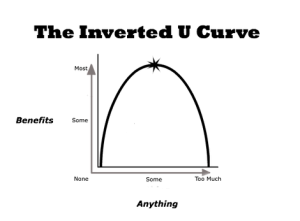
Marketing budgets: How much is enough?
According to a recent study, Booking.com and Expedia return $16 for every dollar spent on marketing. This looks great on paper, but the reality is that over the last decade OTAs’ return on marketing investment decreased by 15 percent.
This explains why Booking.com dramatically decreased its advertising spend.
The same story is playing out across the hotel marketing landscape… cost-per-acquisition is soaring, and if the Goliaths of the industry had to change their strategies, it’s probably time to sit down and address the elephant-in-the-room: how much should you be spending on marketing?
First: What’s in the marketing budget?
Allocations within the marketing budget vary from company to company. According to The CMO survey sponsored by Duke University, Deloitte LLP, and the American Marketing Association, “less than half (47.9 percent) of companies include expenses for marketing employees in their marketing budgets, while most companies (61.3 percent) include direct expenses for marketing – such as advertising, trade promotions, and direct marketing.
What does your accommodation include in its annual marketing budget? Do you include employee or outside agency costs in your budget? How about OTA commissions or global distribution system fees?
This is a critical definition that will determine how much you need and how your results are perceived by ownership.
The inverted U-curve
Hotel marketers can learn a valuable lesson from Malcolm Gladwell in his inspiring book David and Goliath. In the book, Gladwell talks about “inverted U-curves”.

“Inverted U-curves have three parts, and each part follows a different logic. There’s the left side, where doing more or having more makes things better. There’s the flat middle, where doing more doesn’t make much of a difference. And there’s the right side, where doing more or having more makes things worse,” according to Gladwell.
The curve has been around for over a century and it has been applied to a wide range of different situations:
Money: Scholars who research happiness suggest that more money stops making people happier after they exceed $75,000 per year
Class Size: Contrary to popular belief, a class size decreases beyond an optimal number, learning effectiveness decreases. Apparently, the optimum number is 18-24 students per class
Punishment and Crime: Past a certain point, cracking down on crime and locking people up stops having any effect on criminals, makes crime worse and the juvenile delinquency rate increases
Similarly, accommodation marketing budgets have an inverted U-curve; doing too little will result in sub-optimal results, but doing too much is often wasteful.
So how can you identify this sweet spot?
Accommodation providers on the left side of the curve (usually large branded properties) typically allocate little to no budget in marketing beyond their brand fees.
They often have a lacklustre brand.com web page, no outside marketing investments and their distribution relies almost entirely on third parties. The good news is that if your property is on that part of the curve, any additional marketing investment will help you move to the flat middle of it, where investments and return are in balance and your profitability is at its zenith.
The majority of hotels fall between the left side and the flat middle of the curve (and need to spend more to achieve their goals. However, if you categorise OTA commissions as marketing costs, virtually every hotel immediately moves to the right side of the curve, where spending more often delivers diminishing returns. As Kalibri Labs notes in their recent report Demystifying the Digital Marketplace: “if you’re growing top-line revenue – but you’re spending a lot to do it – then you’re ultimately less successful in contributing to overall profits. Not an optimal strategy.”
If profit is not your primary goal (i.e. rebranding, new openings, brand awareness projects, etc.) spending more may be the correct strategy, but for the vast majority of accommodation (if you believe Malcolm Gladwell) it is not.
So, how much is too much when it comes to hotel marketing?
Marketing affects profitability
According to a recent Gartner Research study, companies spend an average of 12 percent of their annual revenue on marketing. A recent CMO Survey comes to similar conclusions, highlighting how tech companies are among the biggest spenders (14 percent) when it comes to marketing. The accommodation industry, however, seems to pay an even higher price (up to 25 percent, according to Kalibri Labs). Tom Klein, the former CEO of Sabre, recently stated in a Tnooz interview that travel “is not 90 percent margin like many of the businesses that Google and Facebook and others are in.” With OTAs’ average commission at 19 percent and direct booking cost-per-acquisition growing year after year, industry margins are under siege.
So while average daily rate and revenue per available room are important metrics, you should also focus solely on “ProPAR” (profit per available room): the revenue generated per room minus the investments needed to acquire the guest. Here again, we strongly recommend categorising OTA commissions as marketing costs to get a true picture of your marketing budget and its effect on profitability!
What about direct bookings?
Because of high third-party acquisition costs, there has been a lot of attention on building direct channels.
The unavoidable truth is that it is also very easy to overspend when it comes to direct booking investments and you can find yourself on the right side of the inverted-U curve without even realising it. Similar to the OTA channel, direct reservations also have growing costs.
Special discounted rates, loyalty programs, hotel digital marketing, pay per click, metasearch engines and social media ads to name a few. Our advice to clients has always been: “You should have an unlimited budget for things that work…”
This philosophy requires a near-manic obsession with return on investment (ROI) tracking and analytics that requires serious software and some intensely nerdy data, scientists. As the CMO survey reinforces: when respondents were broken into three groups – high, medium and low usage of ROI analytics – marketing budgets were 70 percent larger in the high group than the low group.
How much is too much?
Before you can determine how much to budget for marketing, you need to answer three critical questions:
- What are the revenue targets by segment?
Without a concrete understanding of targets by segment, hotel marketers cannot quantify (or deploy) their budgets properly… leading to misalignment with ownership and missed targets.
- Where is the property in its lifecycle?
Recently opened accommodation, or properties which went through a rebranding, in fact, should be less focused on return on investment and more on building awareness. In cases like these, 20-25 percent of annual revenue spent on marketing is common. If, on the other hand, your hotel has matured to a more advanced stage and it’s been in business for 3+ years, then 8-15 percent of your annual revenue on marketing should be more than enough to guarantee you a good balance between profit and visibility.
- How much revenue is marketing accountable for…?
As the CMO survey points out: “Marketing is responsible for leading revenue growth at 38.4 percent of companies. These companies have larger marketing budgets as a percentage of the overall company budget than companies that do not assign primary responsibility for revenue growth to marketing.”
Tambourine is a US-based marketing, booking and distribution service that helps hotel and travel marketers sort it all out. It delivers a 360º program that reduces stress and increases revenue.






